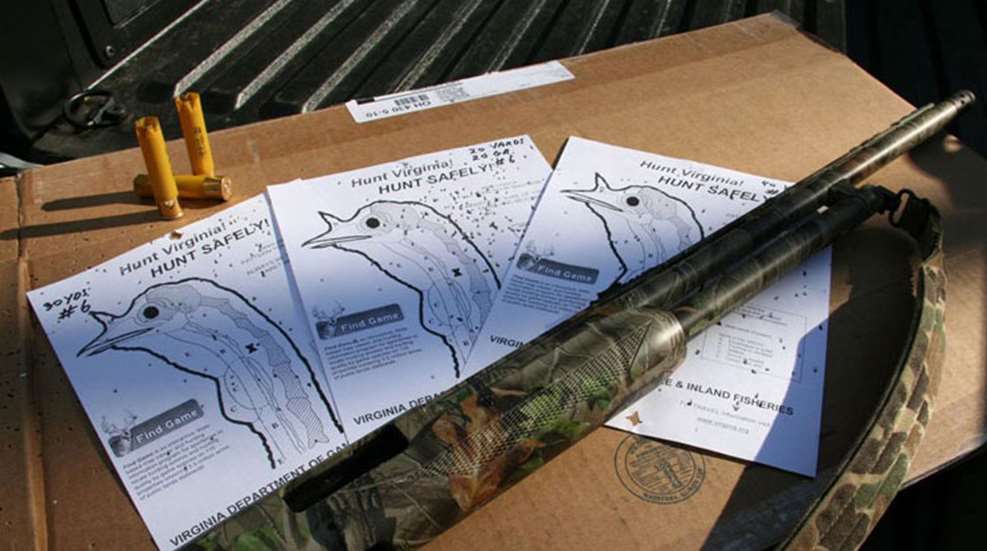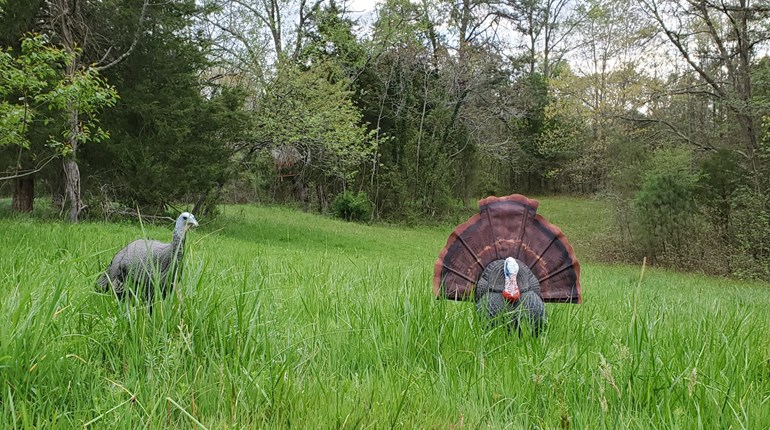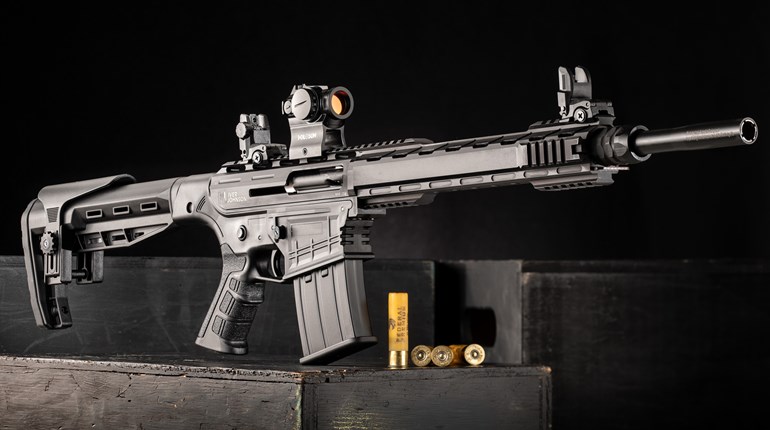
As people grow older, they tend to downsize things in their lives. And that’s exactly what I did several years ago concerning my choice of a turkey-hunting shotgun. After toting a 12 gauge around the spring woodlands for more than three decades, I made the decision to retire the big gun and replace it with a lightweight 20 gauge. It’s a decision I’ve not regretted.
There are several advantages to hunting turkeys with a 20 gauge versus a 12. First of all, most 20 gauges are a pound or two lighter than 12s, and as a result offer faster handling. Twenty-gauge shotguns are also more compact than 12s and usually have shorter barrels. For the hunter, this translates into moving through the woods more easily and quietly.
For instance, while carrying a long-barreled 12-gauge shotgun on a sling over your shoulder, how many times have you tried to duck under an overhanging tree limb only to have the muzzle of the barrel snag on the branch? The maneuver usually results in a noisy clank of metal, announcing your presence in the woods.
And 20s have other advantages. They are a great shotgun choice for getting kids started turkey hunting, not only because of their light weight and shorter overall length, but also because of reduced recoil. Some models, such as the Mossberg 500 Super Bantam Turkey shotgun I purchased, even come standard with a 1-inch spacer built into the composite, camouflaged stock.
My plan is to continue hunting with the 20-gauge until my grandsons are old enough to begin turkey hunting. Then it will be a simple process, with the aid of an Allen wrench, to remove the spacer and shorten the stock. As the boys grow, I’ll replace the spacer when the added stock length is needed once again. Just for the record, I shoot 3-inch, Hevi-Shot, ounce-and-a-quarter, size 6 turkey loads from my 20 gauge, and have found it to be a devastating shell, especially coupled with an extra-full choke.
As with kids, some smaller women—and senior turkey hunters—would benefit from a 20-gauge. These people, and I’m including myself in the senior category, simply don’t have the upper body strength required to hold a heavy 12-gauge in the shooting position for the extended time it takes some reluctant gobblers to finally stroll within gun range. Although using a 20-gauge may not totally solve this problem, it will help, as will adding a shooting support stick. And if you are looking to buy your significant other a new turkey gun, a 20-gauge usually costs less than a 12. The ammunition will be priced slightly lower, too.
There is one disadvantage to hunting with a 20 gauge instead of a 12, and as you may have already guessed, it is effective range. You will have to work the bird about 10 yards closer—a maximum range of about 30 yards—to make a killing shot. The reason is that a 20-gauge shell simply does not put as much shot downrange as a 12. But you may enjoy this added challenge and test of your turkey hunting skills. After all, isn’t getting really close to a wild gobbler what this sport is all about?
A disturbing trend I’ve noticed in turkey hunting in recent years is the advocacy of bigger and bigger guns shooting larger and heavier loads. This gives some turkey hunters a false sense of competence, resulting in them shooting, wounding, and then not recovering birds that were too far out of range to begin with.
As for me, I’ll stay with my 20 gauge, thank you. The last five turkeys I’ve killed were with that smaller gun. The sixth bird? Well, let’s just say it wasn’t the gun’s fault that I missed.
I’ve also made one more concession concerning growing older and yet continuing to chase wild gobblers: hunting mainly from a blind. I do quite a bit of preseason photography of wild turkeys, and learned early on that most turkeys have little fear of a blind. At first, I photographed mostly from brush blinds, but eventually graduated to a small, commercially made blind to help keep rain off my camera equipment. I was amazed at how accepting the birds were of the blind, even walking right past it the very next morning following the day I’d set it up.
That got me thinking that maybe I should hunt from the blind once the season came in. I did, and found that I can sit comfortably for hours in a large, folding camp chair while sipping coffee, munching snacks and making the occasional turkey call. With two or three turkey decoys placed in front of the blind at strategic ranges, it almost seems like cheating.
The downside to hunting from a blind is that you are limited to one location, so choose that location carefully. Preseason scouting comes in handy here. Look for areas where turkeys want to naturally congregate after fly-down or where gobblers like to strut mid-morning. My blind is set up along a woods’ edge overlooking a crop field. That way I can slip in and out of the blind from the woods and not be seen.
So how about you…is it time to downsize to a 20 gauge?







































